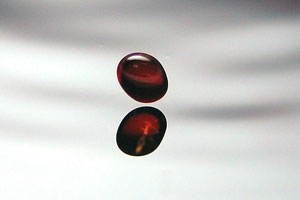So if you're a redhead, you inherited a nonworking copy of MC1R from both your mom and your dad. If you get a non-working copy from only one of them, then you won't have red hair. You'll be a carrier.
Right now redheads are at an artificially high level in the human population because their recessive red hair genes are concentrated in North America, Europe, and Australia. For example, 10% of Ireland and 2-6% of the U.S. has red hair.
These numbers are maintained because carriers and redheads keep making new redheads with each other. But as barriers go down, their red hair genes will flow out of these populations and into the human gene pool.
Red hair genes will become diluted in this pool but they won't be completely swamped out. Even as redheads decline in numbers, their genes will remain constant. It will just be less likely that two carriers and/or redheads will meet and have babies with red hair.
This is all interesting but it got me to wondering about how many redheads there will be in the distant future when all the mixing is said and done. We can use something called the Hardy Weinberg equation to figure this out.
This equation works great for simple dominant/recessive traits like red hair if we know how many of each gene version there is. To do this, we need to figure out how many redheads and how many carriers there are in the world.
It is easy to figure out how many redheads there are--you can tell who they are just by looking at them. But figuring out carriers is a lot harder. We can make guesses based on the number of redheads (again using Hardy Weinberg) but until we sequence a lot more MC1R genes, they'll only be guesses.
The numbers I have seen floating around are that around 1% of the world's population has red hair and that around 4% carry the red hair version of MC1R. This means that there are around 65 million or so redheads in the world and 260 million carriers. (This sounds high to me but these are the numbers out there.)
When we use these numbers and apply the Hardy Weinberg equation, we end up with a final percentage of redheads of 0.1% or 6.5 million. This is quite a fall from current levels but they are hardly wiped out!
There are lots of assumptions* in these calculations that might cause the number of redheads to actually be more or less than 0.1%. But unless there is some red hair specific catastrophe or people start burning them as witches again, redheads are here to stay.
 Dr. Barry Starr is a Geneticist-in-Residence at The Tech Museum of Innovation in San Jose, CA.
Dr. Barry Starr is a Geneticist-in-Residence at The Tech Museum of Innovation in San Jose, CA.
*Some assumptions used:
1) There are no barriers to finding partners
2) The 4% carrier number is an accurate one
3) Two non-workingMC1R genes produce red hair in all genetic backgrounds
4) Other assumptions described here
37.332 -121.903
 Red hair genes will be diluted but will not go away.I got a call last week from a reporter in Virginia. Someone had come up to her in a bookstore to offer her condolences about her kind dying out. She is a redhead.
Red hair genes will be diluted but will not go away.I got a call last week from a reporter in Virginia. Someone had come up to her in a bookstore to offer her condolences about her kind dying out. She is a redhead.